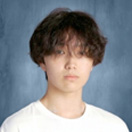Self-healing concrete: Local mushroom species mends cracks naturally

[Green Moss on White Surface. Photo Credit to Pexels]
In the busy labs of Rutgers University, Dr. Jin-Ping Zhang has spent the last decade peering through microscopes at something that could change the future of construction: a humble soil fungus that might just be concrete's best friend.
"We watched the concrete heal itself," says Dr. Zhang, describing the moment his team first witnessed Trichoderma reesei, a common fungus, patch a crack in their laboratory sample.
The secret lies in the fungi's remarkable ability to spring to life when water seeps into concrete cracks, operating like a maintenance crew that never sleeps.
These microscopic workers produce calcium carbonate, essentially creating new concrete from within.
Over at Binghamton University, Professor Congrui Jin and her research team are equally excited about this natural repair system.
"Think about how a broken bone heals itself," she explains.
"Now we're teaching concrete to do the same thing."
The idea came from an unexpectedly simple observation: fungi growing on old concrete structures.
Instead of viewing this as a problem, these scientists saw an opportunity: what if they could harness this natural process?
Yet getting fungi to cooperate with concrete isn't as simple as it sounds.
The material is highly alkaline - not exactly a friendly environment for living things.
The research teams had to figure out how to help the fungi survive while staying dormant until needed, enabling them to remain viable for longer uses.
The solution they developed is surprisingly elegant: mixing fungal spores and nutrients into concrete during construction.
These spores lie dormant, like seeds waiting for rain, until a crack lets in water.
Only then do they wake up and begin their repair work.
For America's aging infrastructure, such as bridges, roads, and buildings, this breakthrough couldn't come at a better time.
The American Society of Civil Engineers has been raising alarm bells about our crumbling infrastructure for years; traditional repairs are expensive, time-consuming, and often temporary.
"We're not just patching problems - we're creating infrastructure that can look after itself," Professor Jin points out.
"It's about working with nature instead of against it."
The implications go beyond just fixing cracks.
This technology could dramatically reduce maintenance costs and extend the lifespan of concrete structures, especially in hard-to-reach places where regular repairs are challenging.
As climate change puts increasing stress on contemporary infrastructure, solutions like this become even more crucial.
Self-healing concrete could significantly reduce the carbon footprint of repairs and replacement work.
The path from laboratory success to widespread implementation still has challenges ahead, but these scientists remain optimistic.
After all, if mushrooms can turn dead leaves into soil, maybe they can help create stronger, more resilient cities, too.
As it turns out, the solution to one of the biggest infrastructure challenges might have been growing in backyards all along.
Sometimes, the best innovations don't come from inventing something new, but from learning to work with what nature already does best.

- Alex Han / Grade 11 Session 1
- Thornhill Secondary School

![THE HERALD STUDENT REPORTERS [US]](/assets/images/logo_student_us.png)
![THE HERALD STUDENT REPORTERS [Canada]](/assets/images/logo_student_ca.png)
